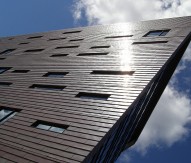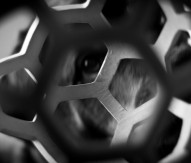
Nanoscience produces 5-vertex tilings
Tessellation patterns can now be seen in the laboratory for the first time thanks to new research carried out at Technische Universität München in Germany.
The experiments were carried out by postdoctoral researcher David Ecija and PhD candidate Jose Ignacio Urgel in collaboration with scientists in Karlsruhe and Zurich and was supported by the European Research Council through an Advanced Grant and a Marie Curie Fellowship Grant, in additional to other national funds.
Organic molecules equipped with functional groups to express distinct linkages to metal atoms were deposited onto a smooth silver substrate under vacuum conditions. Subsequently the organic layer on this platform was exposed to an atomic flux of the lanthanide cerium. At a certain ratio of cerium atoms to molecules, self-assembly produced a symmetrical complex 2-D pattern, known as the snub square tiling. Clearly identifiable through scanning tunneling microscopy was a recurring, five-vertex connecting element less than one nanometer across, a cerium-ligand coordination unit.
This was the first time snub square tiling patterns had been fabricated and seen at the molecular level by exploiting self-assembly protocols. According to physicists, every new surface architecture could potentially open the way to novel physics and chemistry and until now five-vertex structures have proven elusive. The use of lanthanide element cerium in the experiments marks the beginning of a new line of research.
This is the first time the TUM researchers have co-ordinated molecules with a lanthanide, and the first time anyone has done this in 2-D. Speaking about the work, researcher Ecija said: “Lanthanides are special. They have very intriguing optical, magnetic and chemical properties that could be interesting for nanoscience and possibly also for nanotechnology. Now we have a new playground for research with the lanthanides, and beyond.”
The findings are reported in the journal Proceedings of the National Academy of Sciences.






